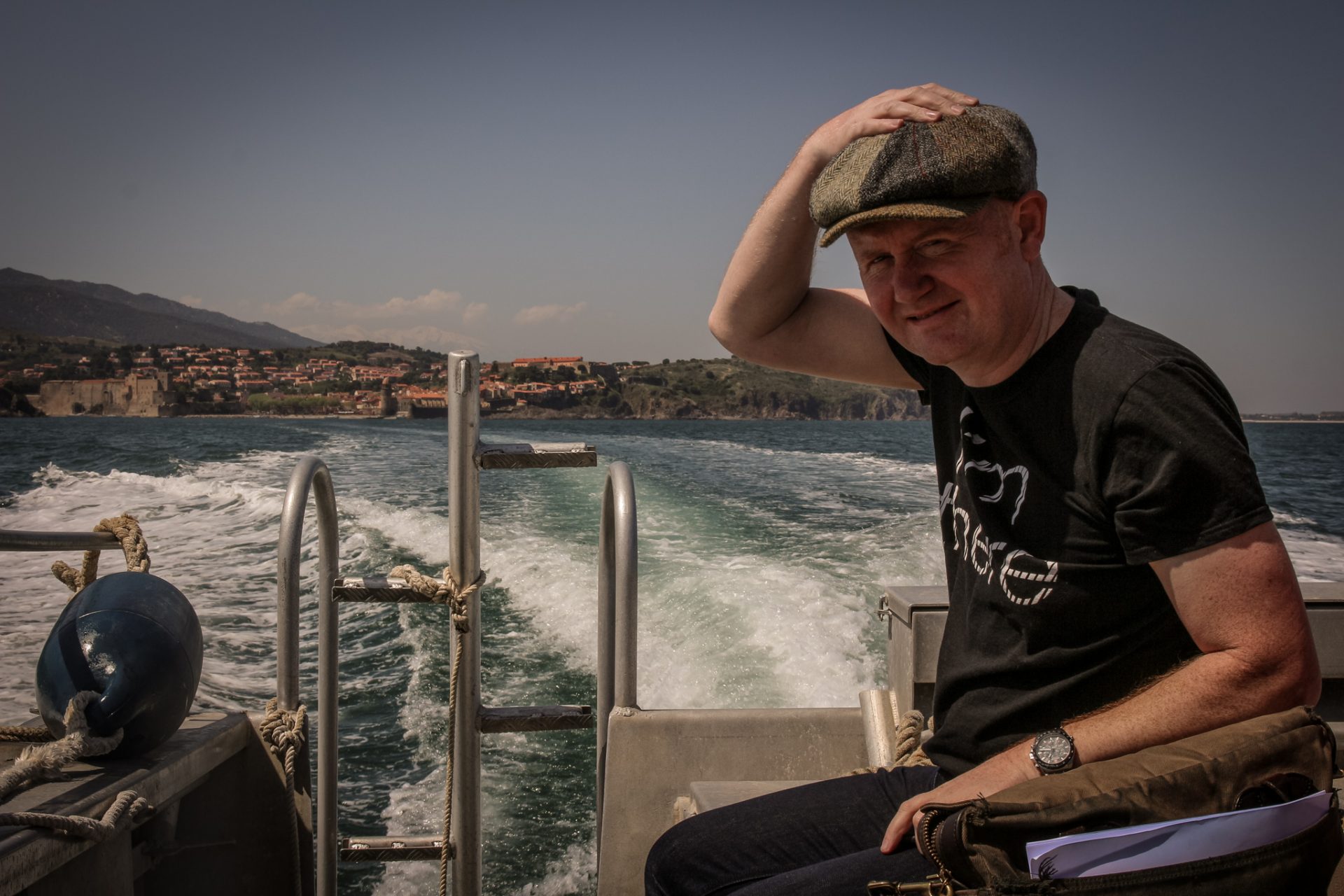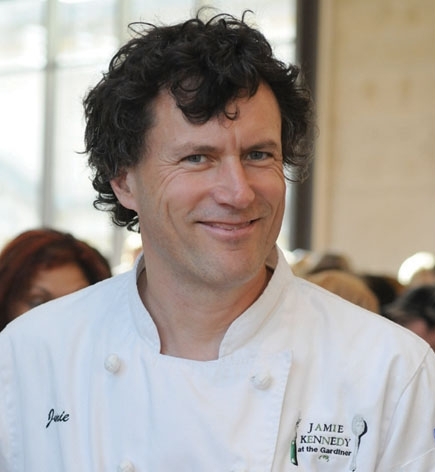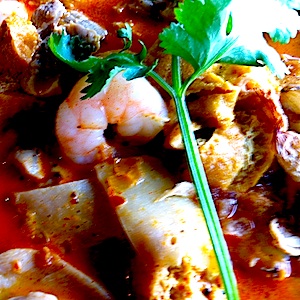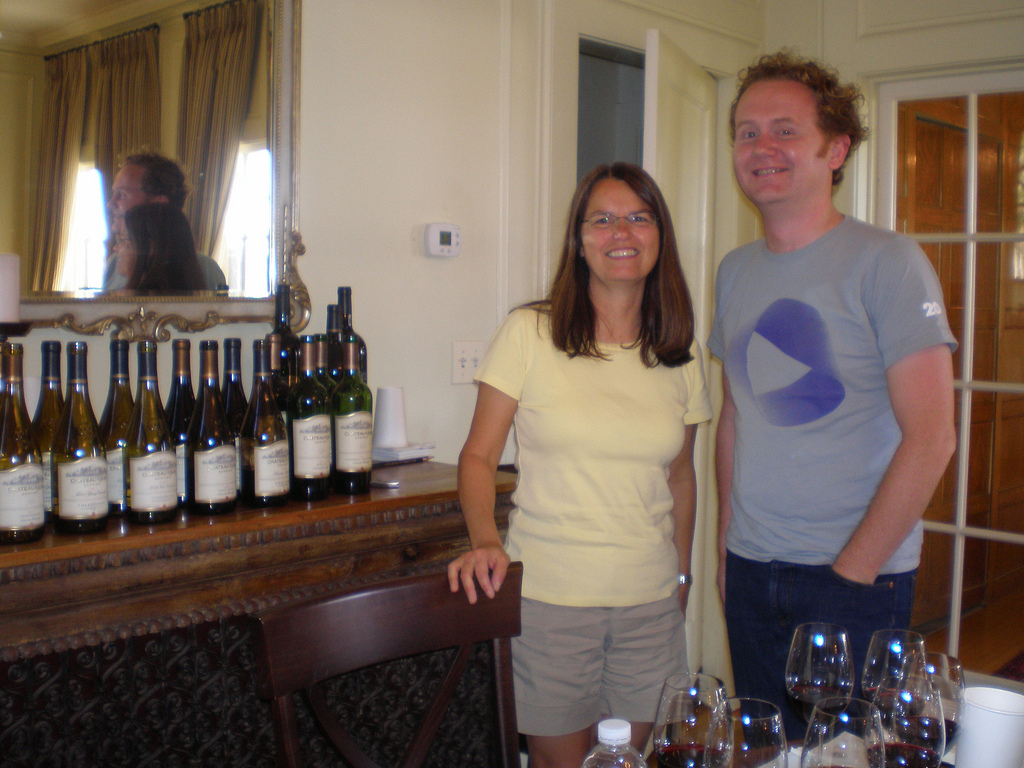by Kristina Santone

Doreen and Peter Sullivan teach people how to make cheese.
I’m sitting at the kitchen table of a comfortable home in Niagara Falls, Ontario with complete strangers who all share the same interest: making cheese. It should strike me as odd that a mother of a dairy science major at Cornell, a lawyer-by-day but playwright-by-night and two potential hobby farmers are sitting amongst each other chatting about their interests and travels quite breezily, but it doesn’t. It seems about right. Our hosts and teachers for the day are Peter and Doreen Sullivan, and they make everyone feel as comfortable in their home as they clearly are with each other. By our first coffee break, I discover that even though this is technically only their third workshop, the Sullivans are not cheese-making amateurs by any means. Peter has even helped out their friends at Upper Canada Cheese by working a three-month stint when they were short a cheese maker. Looking back on the experience, Peter says he definitely prefers to make non-commercial cheese at home, for people like us.
For the past nine years Peter and Doreen have been making cheese in their home together. The idea fell upon them by chance years ago when Peter was listening to Margaret Morris on CBC radio. She was talking about her cheese-making classes and Peter thought it would be the perfect gift for Doreen for Christmas. Since it was December 23, he made the phone call and booked the class right away. They did it together and enjoyed it so much that they tried it on their own and had enough success that they kept at it. They started by giving some to family, friends, anyone really who appreciated cheese. After a while, one of their friends wanted to learn about making cheese in their own home and this gave Doreen and Peter the idea of putting on workshops for the public. They thought surely there must be other people who are interested and passionate about warming temperatures for milk and alternative uses for excess whey. And they were right. The first class they organized filled up quickly and I had to wait until they offered their third class to join.
When you get to know them, it’s a wonder that the Sullivans haven’t been making cheese and teaching these classes all their lives, they seem tailor-made for it. Peter is a retired teacher of hospitality courses at Niagara College and Doreen is a former teacher as well. Today, their classroom is their own living room and their students are foodies and those with a craving to satisfy their culinary curiosities.
Doreen also had a career as a dental hygienist, and as the day goes on, it is clear that she uses those skills to maintain a meticulously hygienic work environment. She’s so dedicated to keeping her cheeses free from cross-contamination that while wrapping a batch of cheese, she won’t touch anything else, not even the recipe page off of which she’s reading.
Which brings me back to cheese making day, I showed up at 8:50am and upon my arrival I was delighted to see that there was coffee. Up until that point I had been wondering why exactly I had wanted to learn about cheese-making so much that I had been willing to get up so early on a Saturday.
Doreen’s day however, has started much earlier, as she made sure that the 9 litres of whole pasteurized milk that we would be using had been heated to exactly 29 degrees Celsius (or 84 degrees Fahrenheit) at about 7:30 that morning. She is serious about her heat and monitors it constantly to make sure it stays at 29. She is also quite serious about milk. We are using whole, pasteurized milk from the grocery store because of existing laws (that we are all more aware of today because of Michael Schmidt) concerning food safety. In Canada and some parts of the U.S. you cannot use raw milk unless it is your own product from your own cows and you are not selling it. Consumption is allowed, but selling and distributing is illegal. The rest of the world however has no such laws banning the sale or distribution of raw milk, and many feel that unpasteurized milk has greater flavour and a truer character. You can tell that Doreen has more to say on this but holds back.
Doreen and Peter take us through the production of two types of cheeses, the first is Camembert and the second is a Roquefort-Style Blue Cheese. Doreen’s career background shines through during the cheese-making, as she completes every process with care and precision. She teaches us to sing “Happy Birthday” twice while washing our hands, insisting that is the correct length of time to be scrubbing away. At first I think it a bit odd, but then find myself rushing through the words quickly in my head as I wash my own hands before I get to touch the cheese. I am a believer…and I follow direction well.
While we continue preparing what will be the Camembert, Doreen adds the appropriate doses of Penicillium candidum, rennet and the remaining necessary ingredients to the milk. We stir the mixture, wait, inspect it, and then wait some more. We finally get to feel the texture of the cheese for ourselves, and see how and when to test for a ‘clean break’. This is the term for what happens when you cut the curd and it slices easily. It means the curd is firm enough and ready to be scored into half-inch cubes. We wait some more and then drain some whey and perform a task called hooping, which is from what I can tell, filling the cheese mold and again, draining the whey until you have semi-solid little pucks that will firm up as the whey slowly drains out.
The blue cheese starts out much the same, with milk heated and ingredients added. There is stirring involved, waiting for curds to form, and the subsequent clean break. The main differences happen from that point on. The curds, which are cut smaller or larger depending on the texture desired (smaller curds = dry-ish cheese, larger curds = creamier cheese) are formed into molds to drain excess whey and then once firmed up and flipped many times, and are later brined. After five to seven days of firming up, the cheese is then pierced numerous times in order for the veins of mould growth to properly develop. I haven’t gotten to this part of the experiment yet, but my fingers are crossed that my precious puck will mould up nicely for me.
At the end of the day I have two balls of “proto-cheese” to call my own, and begin to finish the process at home by salting, brining, flipping, poking, wrapping and aging them. I feel prepared but nervous as I think of my houseplants, parched and wilted in my living room, almost challenging me, I start to second-guess my ability to successfully finish this process. I think of what Doreen and Peter have taught me, and I start to hum “Happy Birthday” to myself as I wash my hands and prepare to flip my cheese… I can hardly wait to taste the fruits of my labour.
At the end of the day, I’m sitting at my parents’ kitchen table in a comfortable home near Niagara Falls, Ontario. My family members are sitting around the table, and they all share the same interest: eating cheese. There is fresh Niagara Gold, delicious Comfort Cream and a variety of other savory cheeses on the table. We talk breezily about our day and I share stories about Peter and Doreen Sullivan, their kindness, and how cheese is made. I bite into a piece of soft, bloomy brie and hold onto the creaminess just a little longer than usual, in honour of the cheese-maker who went to a lot of work to create this moment for me.









Great article. As an enjoyer of good cheese, I would love to read more about such opportunities.
If you are intersted in registering for this workshop, please contact Doreen Sullivan for future dates at sullivan@vaxxine.com
I love this article. How do I find out about taking a class like this?
Sounds like a great day! Really fits into the move back towards sustainable slow food knowledge.
Wow! As much as I love cheese I had no idea that such courses are available.Very informative!Great to know that there are such talented people around willing to share their talents.
Nice work, Kristina – when I started reading I was still stuffed from my breakfast cereal, but now all of a sudden I find myself craving cheese… funny that…
Fascinating to know there are people in Ontario who have found their passion and follow it and share their knowledge while embracing the European tradition! We felt like we were right there with you!!
Thanks for enlightening us Kristina!
This was a very informative and entertaining article. I live in Niagara Falls and had no idea that such classes exist. I will definitely pass the word to all my cheese loving friends. Good job Kristina!
Well, brava and bravo ! You seem to be very successful with your cheese making.
Hope the 2 of you are well (as I can see on the article photo)
Congratulations and hope to hear from you soon.
françoise, jean-pierre and company
What a wonderful opportunity..
Can’t wait to attend this demonstration and
to learn cheese making at home….
Took the class today, January 29th, 2011. Doreen and Peter were Fabulous! I loved learning the chemistry elements, processing, everything about cheese making! They made it so much fun and informative for a novice like me, and yet they are absolutely So kind! Long Reign the King and Queen of At Home Cheese Making! 🙂
Very easy and good recipe of making cheese